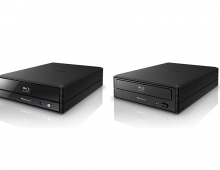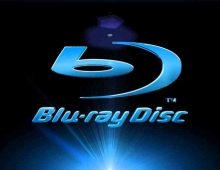
HD DVD's Demise Does Not Mean Instant Success for Blu-ray
While industry press has already spent a fair amount of time examining the decline in HD DVD?s fortunes over this past week, it is more important to remain realistic about expectations for Blu-ray and the next generation DVD market overall in the face of this development.
Even if all HD DVD products were removed from retail shelves today, the average consumer still will not be buying Blu-ray hardware and software in mass quantities for some time.
As noted by both NPD consumer surveys and previously published DisplaySearch opinion on the subject, the mainstream consumer remains conservative about buying next generation DVD in the face of existing satisfaction with DVD and perceived high prices for next generation hardware and software. Much industry rhetoric, particularly after the Warner move before CES, has pointed to format war confusion as a large cause of the decline in overall DVD revenue. This is at direct odds with NPD?s consumer survey results. The reality is that the end of format war confusion will neither boost an already saturated and naturally declining DVD market, nor suddenly spur mainstream Blu-ray uptake.
Though 1080p HDTV adoption remains strong and growing, DisplaySearch expects the primary gateway to mainstream adoption of next generation DVD to remain price-based accessibility for the mass market. As such, price levels are expected to decline more slowly now that the competitive influence of HD DVD is on the wane, and 2009 is likely to be the true year that the multiple appeals of price, content and industry support generate overall resonance with the mainstream consumer.
This is not to say that next generation DVD has fared poorly in the meantime; thanks to heavy competition during the holidays in the form of promotions and discounted pricing, recent sales of next generation players have tracked well compared to DVD players at the same proportional point in their lifetime.
The next generation DVD stand-alone player makers must remain wary, however, as the environment for delivering high definition content is considerably more competitive than the environment faced by DVD when it supplanted VHS. Pay-TV companies, (via cable, IP and satellite) have already implemented plans to deliver high definition on-demand movies on a day-and-date basis with their release on DVD. Microsoft has already experienced remarkable success in selling high definition content on Xbox LIVE Marketplace, and Sony is steadily developing its own plans for monetized HD content delivery to Playstation 3s. Microsoft has already announced the capability of utilizing the HDi interactive scripting language used on HD DVDs to give similar interactive functions to downloaded HD content on the Xbox. Additionally, the quest continues to find a sustainable, successful way of delivering HD video over broadband either to a PC, media center or dedicated set-top box (such as AppleTV or Vudu).
The future of next generation DVD as the consumer?s preferred HD content delivery method is far from certain. Many of the variables that will determine how well these non-disc methods penetrate consumers? digital media consumption preferences include ease of use, content selection, pricing, availability and convenience. Realistically, packaged media will not be displaced for quite some time, thanks to less-than-friendly DRM issues with transferring HD content residing on PCs and set-top boxes. There exists no easy substitute for taking a next generation disc with that same HD content to watch at a friend?s house, for example. Nevertheless, the share of packaged media that is utilized in the consumer HD content consumption mix can be substantially affected by the success of these non-disc-based delivery methods.
So long as the next generation DVD product ecosystem remains conservative in pricing and seeks to maximize short-term revenues over the next two years, the window of opportunity for alternative HD content delivery methods, particularly pay-TV and broadband-dependent services, will continue to widen. The industry should study the lessons learned from the format war, and continue to be aggressive in hardware and software pricing in 2008 and 2009 regardless of whether HD DVD is present as a competitive influence. What is financially healthy for studios and consumer electronics companies over the short term may prove counter-strategic to the long-term success potential of a next generation DVD market that is only one of an increasing number of ways that consumers can view high definition content.
Paul Erickson, Director of DVD and HD Market Research at Display Search.
As noted by both NPD consumer surveys and previously published DisplaySearch opinion on the subject, the mainstream consumer remains conservative about buying next generation DVD in the face of existing satisfaction with DVD and perceived high prices for next generation hardware and software. Much industry rhetoric, particularly after the Warner move before CES, has pointed to format war confusion as a large cause of the decline in overall DVD revenue. This is at direct odds with NPD?s consumer survey results. The reality is that the end of format war confusion will neither boost an already saturated and naturally declining DVD market, nor suddenly spur mainstream Blu-ray uptake.
Though 1080p HDTV adoption remains strong and growing, DisplaySearch expects the primary gateway to mainstream adoption of next generation DVD to remain price-based accessibility for the mass market. As such, price levels are expected to decline more slowly now that the competitive influence of HD DVD is on the wane, and 2009 is likely to be the true year that the multiple appeals of price, content and industry support generate overall resonance with the mainstream consumer.
This is not to say that next generation DVD has fared poorly in the meantime; thanks to heavy competition during the holidays in the form of promotions and discounted pricing, recent sales of next generation players have tracked well compared to DVD players at the same proportional point in their lifetime.
The next generation DVD stand-alone player makers must remain wary, however, as the environment for delivering high definition content is considerably more competitive than the environment faced by DVD when it supplanted VHS. Pay-TV companies, (via cable, IP and satellite) have already implemented plans to deliver high definition on-demand movies on a day-and-date basis with their release on DVD. Microsoft has already experienced remarkable success in selling high definition content on Xbox LIVE Marketplace, and Sony is steadily developing its own plans for monetized HD content delivery to Playstation 3s. Microsoft has already announced the capability of utilizing the HDi interactive scripting language used on HD DVDs to give similar interactive functions to downloaded HD content on the Xbox. Additionally, the quest continues to find a sustainable, successful way of delivering HD video over broadband either to a PC, media center or dedicated set-top box (such as AppleTV or Vudu).
The future of next generation DVD as the consumer?s preferred HD content delivery method is far from certain. Many of the variables that will determine how well these non-disc methods penetrate consumers? digital media consumption preferences include ease of use, content selection, pricing, availability and convenience. Realistically, packaged media will not be displaced for quite some time, thanks to less-than-friendly DRM issues with transferring HD content residing on PCs and set-top boxes. There exists no easy substitute for taking a next generation disc with that same HD content to watch at a friend?s house, for example. Nevertheless, the share of packaged media that is utilized in the consumer HD content consumption mix can be substantially affected by the success of these non-disc-based delivery methods.
So long as the next generation DVD product ecosystem remains conservative in pricing and seeks to maximize short-term revenues over the next two years, the window of opportunity for alternative HD content delivery methods, particularly pay-TV and broadband-dependent services, will continue to widen. The industry should study the lessons learned from the format war, and continue to be aggressive in hardware and software pricing in 2008 and 2009 regardless of whether HD DVD is present as a competitive influence. What is financially healthy for studios and consumer electronics companies over the short term may prove counter-strategic to the long-term success potential of a next generation DVD market that is only one of an increasing number of ways that consumers can view high definition content.
Paul Erickson, Director of DVD and HD Market Research at Display Search.





















